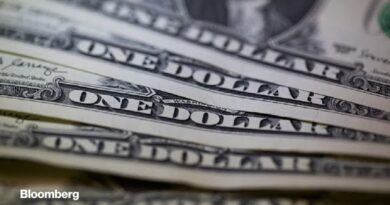This Stock Market Indicator Has Been 83% Accurate Since 1957, and It Signals a Big Move in 2024

The S&P 500 has already advanced 15% in 2024, but history says the index could climb another 10% before the year ends.
The S&P 500 (^GSPC 0.25%) has ripped higher in 2024, posting its second-best first-quarter return of the past decade. And it advanced more than 10% during the first 100 trading days, something it has done just three times in the last quarter-century and just 18 times since its inception in 1957.
If we examine the 18 years in which the S&P 500 climbed at least 10% through the first 100 trading days, a relatively accurate stock market indicator emerges. Specifically, following those strong starts, the index moved even higher during the remaining months of the year 15 out of 18 times, meaning the indicator was 83% accurate.
Here’s what investors should know.
History says the stock market is headed about 10% higher in 2024
The S&P 500 covers approximately 80% of U.S. equities by market capitalization, and the index comprises value stocks and growth stocks from every market sector. Those qualities make the S&P 500 an excellent benchmark for the overall U.S. stock market.
The chart below lists the years in which the S&P 500 returned at least 10% during the first 100 trading days. It also shows how the index performed during the rest of each year.
|
Year |
S&P 500 (100-Day Return) |
S&P 500 (Full-Year Return) |
|---|---|---|
|
1961 |
14% |
23% |
|
1963 |
11% |
19% |
|
1967 |
12% |
20% |
|
1975 |
32% |
32% |
|
1976 |
10% |
19% |
|
1983 |
18% |
17% |
|
1985 |
12% |
26% |
|
1986 |
14% |
15% |
|
1987 |
19% |
2% |
|
1989 |
15% |
27% |
|
1991 |
14% |
26% |
|
1995 |
15% |
34% |
|
1996 |
10% |
20% |
|
1997 |
14% |
31% |
|
1998 |
13% |
27% |
|
2013 |
16% |
30% |
|
2019 |
13% |
29% |
|
2021 |
12% |
27% |
|
Average |
N/A |
24% |
|
Median |
N/A |
26% |
Data source: JPMorgan Chase.
As shown in the chart, when the S&P 500 has advanced at least 10% during the first 100 trading days of a given year, the index has returned an average of 24% and a median of 26% for the full year. Past performance is never a guarantee of future returns, but we can use that information to make an educated guess about the coming months.
Specifically, the S&P 500 has advanced 15% year to date. That leaves implied upside of 9% at the average and 11% at the median. In other words, history says the S&P 500 will return about 10% during the remaining months of 2024.
The stock market’s performance depends on inflation and interest rates
How the S&P 500 performs through the rest of the year depends in large part on inflation and interest rates. Specifically, if inflation moderates and the Federal Reserve lowers its benchmark interest rate, stocks could move higher as lower borrowing costs drive economic expansion and strong corporate earnings.
Alternatively, if inflation remains elevated and the Federal Reserve leaves its benchmark interest rate at its present level — the highest level in two decades — stocks could move lower as higher borrowing costs blunt economic expansion and corporate earnings growth.
Reading the economic tea leaves is challenging right now. The U.S. economy expanded at an annualized 1.3% in the first quarter, well below the consensus estimate of 2.5%. Weak economic growth could hasten rate cuts. However, the U.S. economy added 272,000 jobs in May, crushing the consensus estimate of 185,000. And inflation clocked in at 3.4% in May, firmly above the Federal Reserve’s 2% target. Strong hiring and sticky inflation could delay rate cuts.
Wall Street analysts have mixed expectations for the stock market
The median price target on every stock in the S&P 500 can be aggregated into a bottom-up target for the entire index. The term “bottom up” simply means the target was constructed by analyzing individual components of the S&P 500 rather than broad economic factors. The S&P 500 currently has a bottom-up price target of 5,925, which implies 8% upside from its current level of 5,485.
However, opinions about the stock market vary widely among individual analysts. For instance, Julian Emanuel at Evercore recently raised his year-end target for the S&P 500 to 6,000, which implies more than 9% upside. But Marko Kolanovic at J.P. Morgan has set the S&P 500 with a year-end target of 4,200, which implies 23% downside.
Here’s the bottom line: History says the S&P 500 could advance about 10% by year end, and the bottom-up target more or less supports that conclusion. But investors should not be lulled into a false sense of security. Economic signals are mixed, and at least one Wall Street analyst expects the S&P 500 to decline sharply in the remaining months of the year.
JPMorgan Chase is an advertising partner of The Ascent, a Motley Fool company. Trevor Jennewine has no position in any of the stocks mentioned. The Motley Fool has positions in and recommends JPMorgan Chase. The Motley Fool has a disclosure policy.


